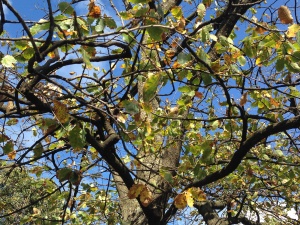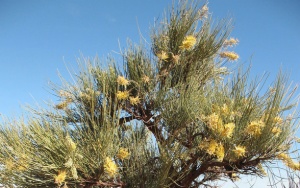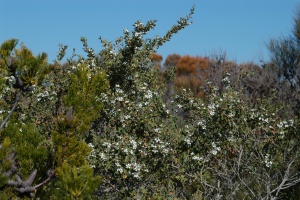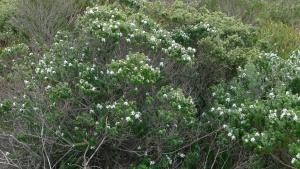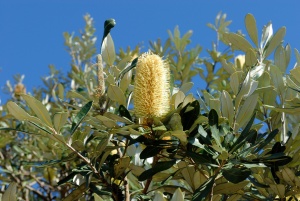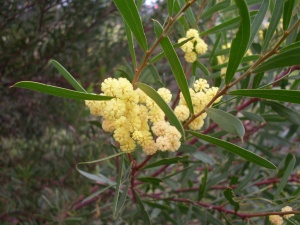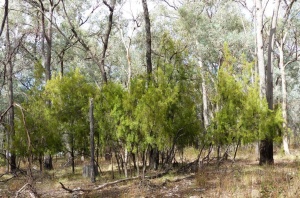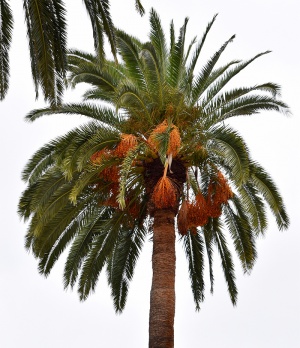Jen Sutfin
English Oak
A deciduous tree, usually 12 – 20 m high when planted in parks and gardens but can reach about 40 m high in its natural environment.
Its low, wide-spreading and rounded canopy is usually 10 – 18 m wide. Its trunk is typically short, with ridged dark grey to black bark.
Leaves
Dark green and oval to rectangular in shape with 3 – 7 rounded lobes on either side. They are 7.5 – 12.5 cm long and have a very short stem. They are pale blue-green underneath and turn tan to brown in autumn, before falling from the tree in late winter.
Flowers
Tiny, green to pale yellow, hanging in slim, cylindrical clusters (known as catkins).
Cowslip Orchid
Tuberous, perennial herb which grows from underground stems. 5 - 30 cm high.
Leaves
It has a broad, hairy basal leaf up to 25 cm long.
Flowers
The 30 - 40 mm diameter flowers are often solitary but up to four flowers may be borne on a slender stem about 30 cm high. It is a very distinctive species because of its bright yellow flowers which often have crimson spots.
Field Guide
Improve your identification skills. Download your Cowslip Orchid field guide here!
Corkwood
Lorea is Latin for 'made of thongs' or 'long strips of leather'; referring to the long terete leaves of this species.
Also known as the Bootlace Oak. Small tree with distinctively deeply fissured, corky and rough bark. It can grow to about 6 m tall.
Leaves
Shiny, dark green needle like leaves are up to 40 cm long.
Flowers
Each bright orange to dull lemon-coloured flower is about 1.5 cm long but is grouped into a spectacular raceme up to 12 cm long.
Coastal Tea Tree
Its genus name Leptospermum is from Greek leptos (thin) and sperma (seed), referring to its small seeds; and its species name laevigatum is from Latin laevigatus (smooth), probably referring to the appearance of the plant.
Also known as Australian Myrtle and Victorian Tea Tree.
A tall, bushy shrub or small tree, with bark that sheds in strips. Grows up to 6 m tall.
Leaves
Grey-green and obovate (egg-shaped and flat, with the narrow end attached to the stalk). They are 1.5 – 3 cm long and 5 – 8 mm wide.
Flowers
White and usually in groups of two. The flower heads are usually 1.5 – 2 cm in diameter, and made up of five petals that are 5 – 8 mm long, with many stamens protruding from the centre that are 2 mm long.
Coastal Rosemary
A member of the mint family. Rosemary refers to the shape of the plant and not the scent.
Large shrub, up to 2 m high and 5 m wide.
Leaves
Dark green leaves with short hairs on the underside. Up to 2 cm long, narrow and pointed and close to the stem. Dense foliage.
Flowers
2 cm across, forming a fan-shape around the stem. White or pale pruple with reddish and yellow spots near the throat.
Field Guide
Improve your identification skills. Download your Coastal Rosemary field guide here!
Coastal Banksia
Tree to 25 m high; bark grey-brown, thick, roughly tessellated (mosaic-like). Its smaller branches are striated (striped with parallel longitudinal ridges or lines).
Leaves
- Often whorled (arranged as a ring of leaves), lance-shaped and sometimes broadest in the upper third
- 4 – 10 cm long and 1 – 3.5 cm wide
- Coloured differently on the two surfaces: upper surface dark green, dull to shiny; lower surface white and covered with dense intertwined hairs
- Pointed or having a broad shallow notch at the tip
- Adult leaves have entire margins while juveniles will have a few short teeth, flat or slightly curved backwards
Flowers
Flowers mainly January - June. Pale yellow cylindrical spikes forming a bottle-brush shape. Each flower head is 6 – 12 cm long, 5 – 8 cm wide and attracts insects and nectar-eating birds.
Coast Wirilda
This ClimateWatch indicator species is supported by the ClimateWatch in Parks program and Barwon Coast.
Bushy shrub/tree that is between 5 - 10 m in height. Bark is smooth initially becoming fissured turning grey to brown.
Leaves
Reddish angular branches with flat, linear, ash-green, smooth phyllodes (flattened stems that resemble leaves) shooting off. These 'leaves' are 6 – 12 cm long and 3 – 15 mm in width with hooked tips.
Flowers
Small, pale yellow with spherical heads.
Cherry Ballart
Shrub or small pyramidal tree, yellowish green or bronzy. Commonly 8 - 10 m high.
Numerous branchlets are hairy and flaky at first then become smooth and straight.The swollen orange to red stalk preceding the small hard fruit is often mistaken as the fruit itself.
Leaves
Scale-like, triangular, 0.5 mm long and 2 – 3 mm long on new growth.
Flowers
Yellow-green flowers in short, dense, clusters that are usually 6 mm long. Flowers appear in early spring to autumn (September to May).
Candle Heath
Dense, multi-branched shrub forming extensive colonies, grows to approximately 50 - 100 cm tall.
Leaves
Leaves are erect and spread outwardly, shape varies from leaf to leaf but they generally are lance-shaped and have sharp points. All leaves are of a similar bright green colour.
Flowers
Flowers December to February. The flowers of candle heath branch out above the shrub on a red stalk measuring between 10 - 30 cm. Fragrant, greenish-white flowers bloom on the terminal end of the stalk. The flowers are trumpet-shaped and are 4 - 8 mm long and 4 - 5 mm in diameter.
Canary Island Date Palm
Single trunk, palm tree grows up to 15 – 20 m high, 1 m in diameter.
Leaves
Spread leaves, 6 m long and 50 cm wide (when flattened), short thick and extremely sharp-pointed.
Flowers
A loose branching cluster of yellowish flowers. The flowers are 2 - 4 cm long with rounder outer segments.

